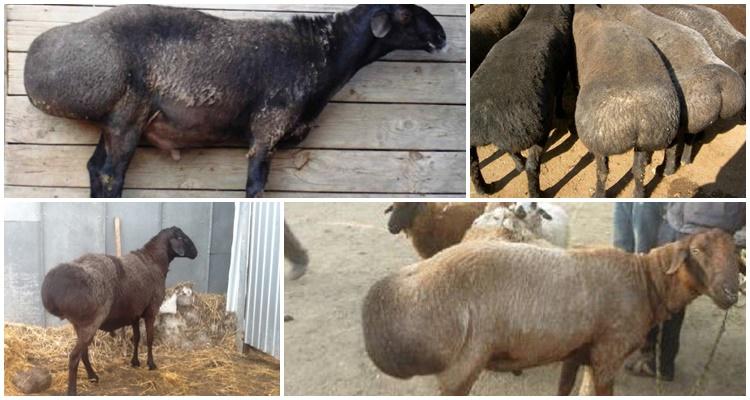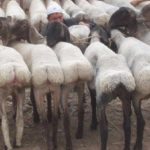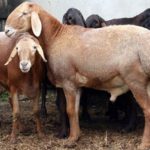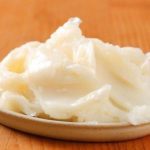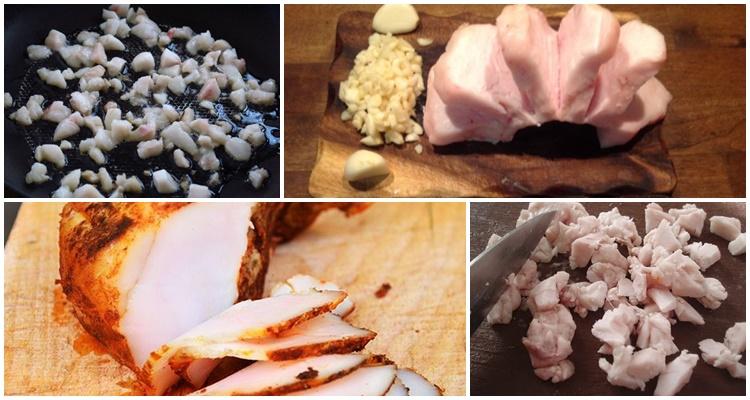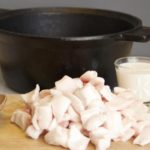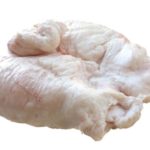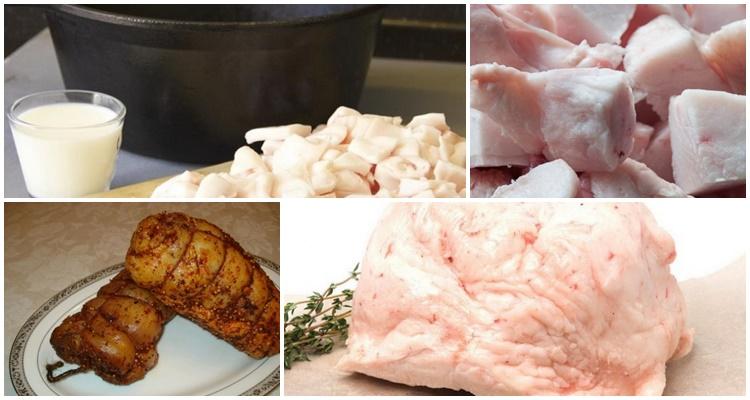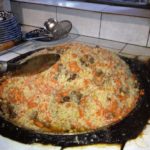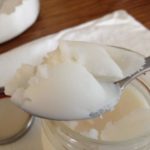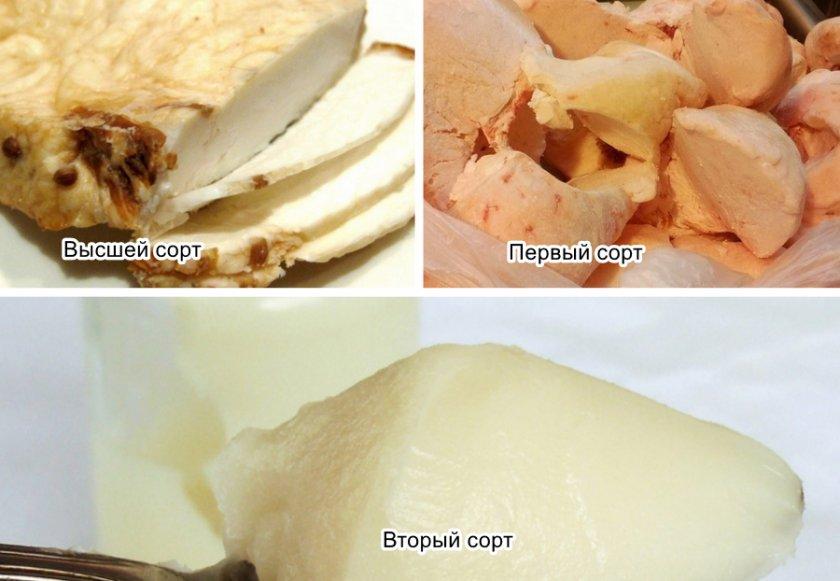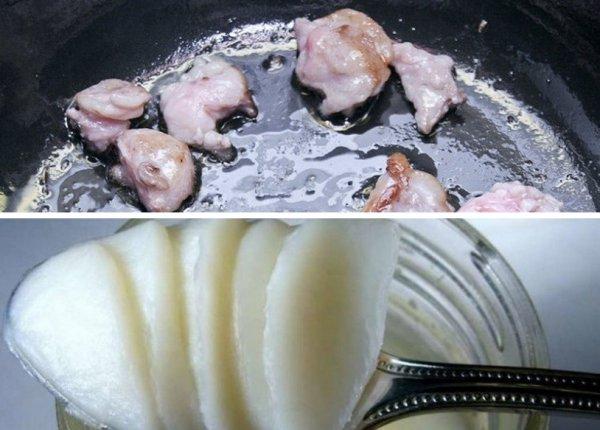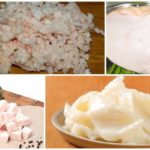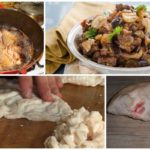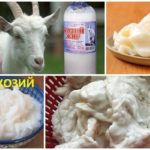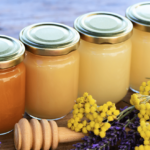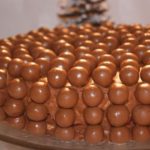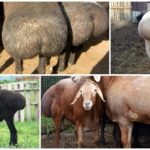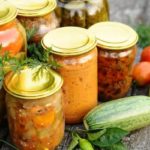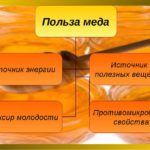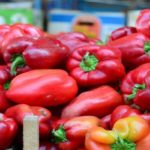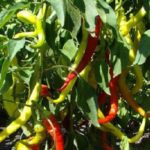Fat tail fat has healing properties. It is used in cosmetology and cooking. Melted raw milk is used in the preparation of pilaf, lula kebab and regular cutlets. Any dish acquires the appetizing smell of lamb. Fat tail fat is obtained from a sheep carcass. But not all lamb fat is considered fat tail. What is lamb fat and how it differs from ordinary fat should be considered in more detail.
Chemical composition and calorie content of fat tail
Asian sheep breeds are called fat-tailed sheep because they have a special organ - the fat tail.It is located on the sacrum, covered with hair and hangs down like a bag. Fatty mass and nutrients accumulate in the fat tail. Rams use up their accumulated reserves when they cannot get food.
Fat tail fat helps sheep survive without food, just like hump helps camels. This is a very high-calorie product: 100 grams = 990 kilocalories. Fat tail contains the following beneficial substances:
- acids - stearic, palmitic, oleic;
- vitamins - A, D, E, B1 and beta-carotene;
- minerals - sodium, selenium, magnesium, zinc, copper.
Raw lamb contains cholesterol, but in smaller quantities compared to pig or cow fat. Fat tail is denser than beef lard and melts at a higher temperature.
Varieties of lamb fat
The definition of "tail fat" refers only to raw lard from the fat tail bag. It is obtained mainly from the Central Asian, Dagestan and Karabakh breeds of sheep. The largest fat deposit is also formed in the Gissar ram and reaches a weight of 55 kilograms. There are breeds in which the tail becomes overgrown with fat - Romanovskaya, Merino.
To obtain different varieties, the raw material is melted:
| Variety | Description |
| Higher | Melted fat tail fat, absolutely transparent |
| First | It is obtained from melted fat from the tail, it is gray in color, but when melted it clears and becomes transparent. |
| Second | Greenish-gray in color, smells like cracklings when exposed to high temperatures, becomes cloudy |
The darker and more turbid the lamb fat, the lower its grade. When melted, fresh tail fat looks and smells nice. It is specially added to meat dishes to add lamb flavor. An unpleasant odor comes from a rotten product.
Beneficial features
What are the benefits of fat tail fat:
- has a warming effect for respiratory infections, colds, relieves cough and sputum discharge during bronchitis;
- restores hormonal balance, eliminates insomnia and nervous tension that accompanies menopause;
- replenishes the body’s energy reserves after intense sports training and physical labor;
- acts as an antioxidant, smoothes and tones the skin, rendered fat helps in the treatment of dryness and frostbite;
- supports the pancreas, normalizes sugar levels in diabetes;
- thanks to the vitamins and minerals in the composition, it increases immunity and reduces the risk of colds;
- improves appearance, strengthens hair and nails;
- stimulates blood circulation in the brain, serves as a preventative against stroke, improves memory, attention and preserves vision.
Lamb fat is included in a therapeutic diet to restore strength after surgery and exhaustion. The product helps to establish lipid metabolism in case of general dystrophy and lack of fatty liver tissue. Substances contained in fat tail strengthen cell membranes and protect them from malignant degeneration. The skin and tissues of internal organs are less susceptible to free radicals and toxins, lose moisture more slowly and fade. Fat fat at the cellular level delays the aging of the body and protects against cancer. Regular consumption of lamb fat increases vital activity and strengthens the nervous system.
Where is it used?
Kurdyuk is used in the field of beauty, health and culinary arts.
Cosmetology
The basis of anti-aging creams is prepared from fat tail fat. When melted, it softens chapped skin and relieves inflammation. Before application, the skin is steamed. Lamb fat is quickly absorbed.It can be applied to the face and body.
In home cosmetology, there are recipes for masks with the addition of fat tail fat:
- against wrinkles - add a tablespoon of mustard powder and honey to 3 tablespoons of melted product;
- to reduce sweating - mix 100 milliliters of rendered lard and 70 milliliters of freshly squeezed cranberry juice;
- for moisturizing - two tablespoons of infusion of rose petals or blueberries, add a teaspoon of melted fat and honey to the juice of one lemon.
Fat tail fat is also used in the preparation of strengthening and nourishing shampoos, balms, and hair masks. Fat tail is used in industrial and home soap making. Lamb fat combines with palm, coconut, nut and babassu oils, softens the water and foams well.
Cooking
How to eat lamb fat:
- according to Adyghe custom, they are boiled, cut into pieces, dipped when cooled in a sauce of garlic and curdled milk, and eaten with white bread;
- marinated in spices or wine for 12 hours and grilled;
- salted like lard;
- smoked with garlic, salt and paprika;
- dry in the fresh air, covered with gauze, after keeping it salted for 2 days in the refrigerator and 5 days at room temperature.
Kurdyuk is part of traditional dishes of Arab and Central Asian countries. Oriental sweets are prepared with lamb fat. It is used to store food without refrigeration. Meat, lined with thick lard, does not spoil in the heat.
Medicine
Compresses with fat tail fat help treat cough. Three-layer gauze is moistened in the melted product and applied to the chest and back. Cover the top with a cloth or cling film and a blanket. The compress is removed after 2 hours.
Baked fat tail helps cure dry cough: add a tablespoon of lard to a glass of warm milk and drink. Lamb fat with honey will enhance the healing properties of herbal infusions.
Wen is reduced using melted lard: the warm mass is applied to the skin and covered with cotton cloth. The product is kept until it cools. Compresses made from fat tail fat are good for joint health. The frozen melted product is grated and applied to the hernia. For varicose veins, freshly chopped fat tail is applied to the veins.
How to cook
A dish in which fat tail fat is traditionally used is pilaf.
To prepare you will need:
- rice - 200 grams;
- lamb - 1.5 kilograms;
- lamb bone - 500 grams;
- fat - 600 grams;
- carrots - 2 kilograms;
- onion - 500 grams;
- hot red pepper - 2 pieces.
Salt, pepper, add garlic and spices to taste. For a classic dish, take half a glass of cumin and black pepper.
How to cook:
- rinse the rice and soak in salted water for half an hour;
- cut into pieces, melt the fat tail and place in a cauldron;
- finely chop the onion, add to the melted lard;
- add the bone to the fat and onion and quickly fry over high heat;
- remove the bone, place the meat in the roasting pan and fry over medium heat;
- cut the carrots into strips of 5 centimeters and 1 centimeter thick, place in a cauldron with the meat;
- when the lamb and carrots are fried, sprinkle in the cumin and put the bone back in the dish;
- sprinkle with black pepper and salt;
- pour water so that its level is 2 centimeters above the meat;
- simmer the dish covered for an hour over medium heat;
- remove the bone, garlic and pepper;
- place rice on top;
- pour hot water, add spices and simmer for another 30 minutes over low heat.
Remove the cauldron from the heat, wrap it in a towel and leave for 40 minutes so that the rice is completely cooked.
How to melt fat tail fat
Cooking steps:
- cut into cubes and mash with a blender;
- pour cold water and leave for 30 minutes so that the product is cleaned of any accidentally trapped blood particles;
- pour the mixture into a heat-resistant bowl and place in a steam bath; you can also melt it in a frying pan with a thick bottom in the oven. Fat tail melts at a temperature of 40-90 degrees;
- readiness is determined by its uniform liquid consistency and transparency.
The finished fat tail is left to cool. When the mass becomes warm, it is filtered through gauze.
Contraindications and harm
The use of lamb fat is contraindicated in the following cases:
- tendency to be overweight, overweight, obesity;
- high blood cholesterol, atherosclerosis, heart and vascular diseases;
- gastritis;
- stomach and intestinal ulcers;
- colitis;
- liver diseases accompanied by stagnation of bile;
- skin prone to allergies.
Lamb fat should be used with caution during breastfeeding. Indigestion and colic in infants are explained by the negative influence of the product. Fat can be introduced into baby food from nine months. If a child develops diarrhea, nausea, or apathy, it should be removed from the diet. Also, you should not apply compresses to infants - irritation and allergies may occur on sensitive skin.
Rules for selection and storage
The fat tail of young animals is suitable for culinary dishes, as it melts well, becomes clean and transparent, without lumps or sediment. His signs:
- dense fatty structure without meat streaks;
- white color with slight yellowness;
- light lamb aroma.
A dent remains on a fresh fat tail if you press the surface with your finger.You should not buy dented, yellow, frozen or defrosted product at the market. When melted, it will emit a strong odor that will ruin the dish or cosmetic product. Old fat tail is identified by its bitter smell and film on the surface. It is best to buy fat tail trimmed from a fresh carcass. Fat from fat-tailed sheep can be frozen and stored in the freezer for 4 months. It is also kept in a glass jar on the top shelf or door of the refrigerator.

